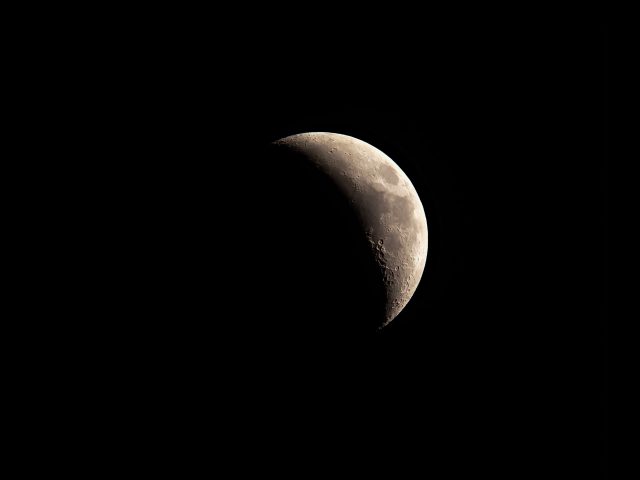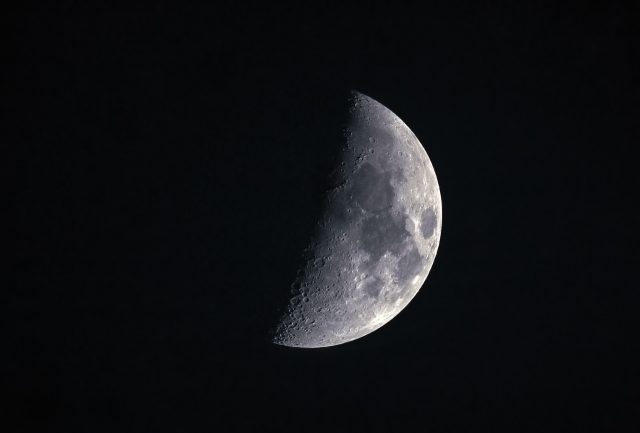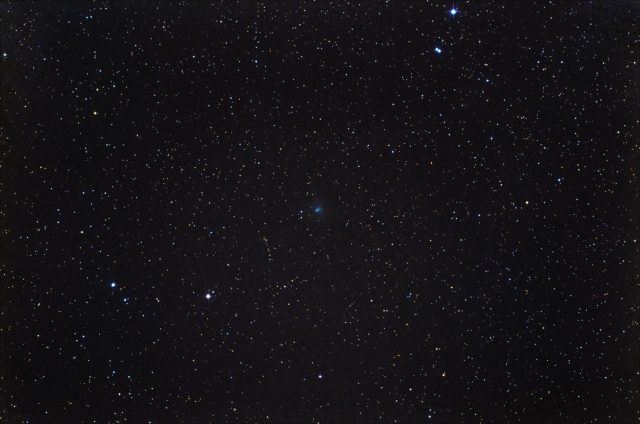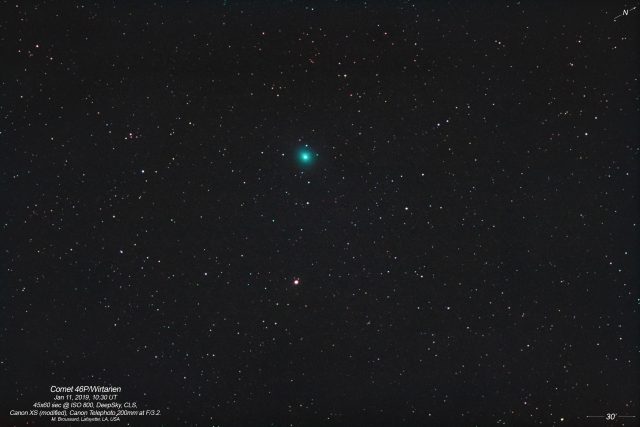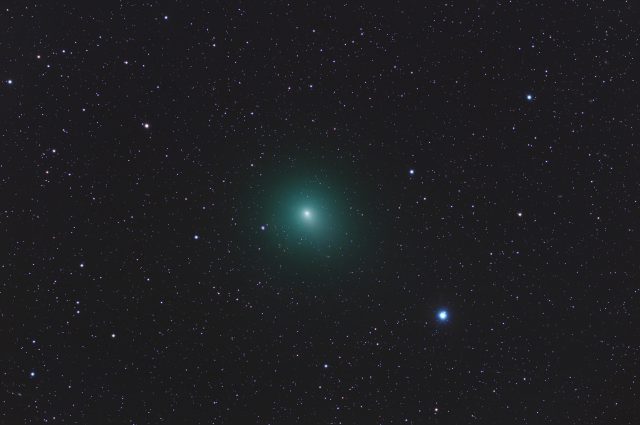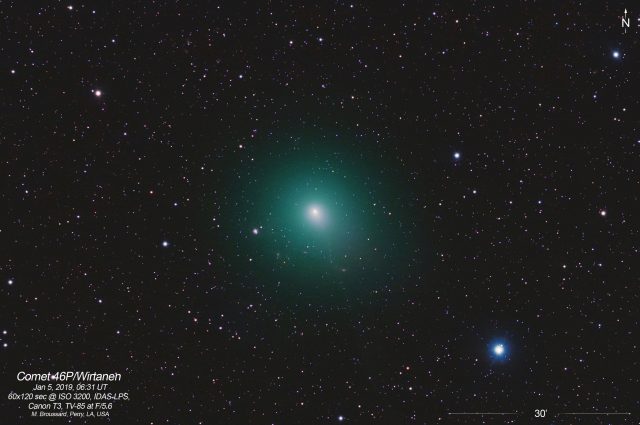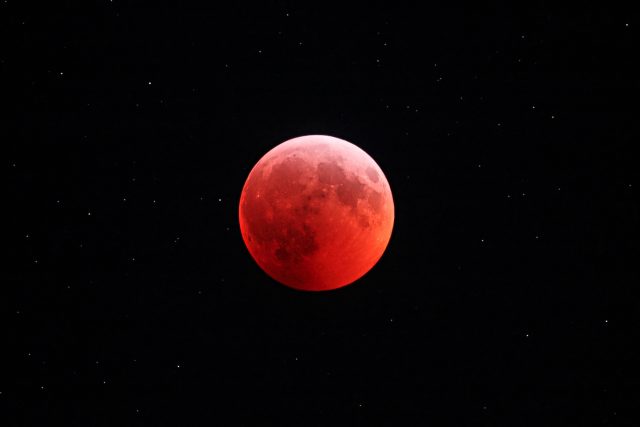

The lunar eclipse of Jan 20, 2019. Top image is just after totality had set in. It is enhanced to show more background stars and brighten the moon a bit, sort of like you would see it in binoculars or a telescope.
The second image is just after mid-eclipse and is enhanced to show more background stars, but not brighten the moon too much. This was more how the eclipse looked to the naked eye.
Below is the whole eclipse saved as a 79-frame animated GIF image:
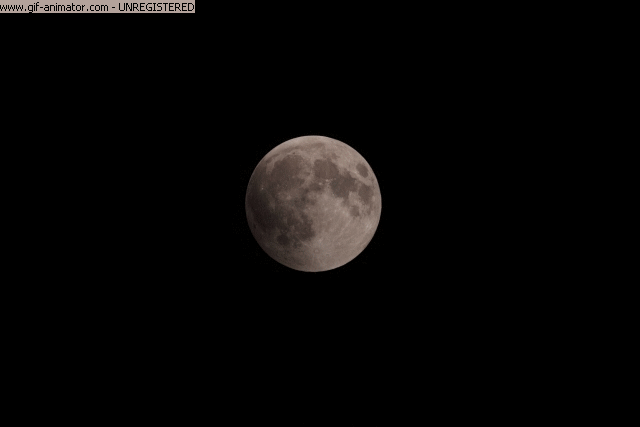
I had a hard time getting the images aligned on this one. I tried manually doing it in PS, but it is tedious and easy to make mistakes. Finally, I had to write a script in IRIS and told it to combine separate RGB files into color images that had been processed through IRIS’s planetary alignment tool. I also tried to make a video file that would upload to hosts on the web. Unfortunately, it always changed the colors to be too bright and yucky with the conversion from AVI to MP3/MP4 or WMV formats, so I gave up on that.

